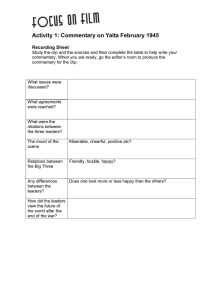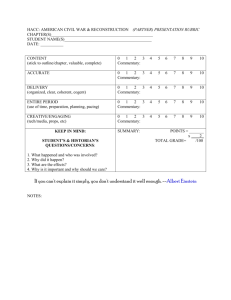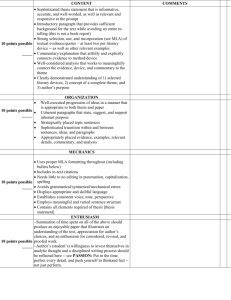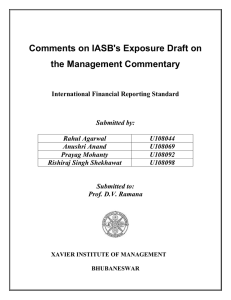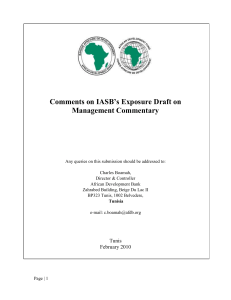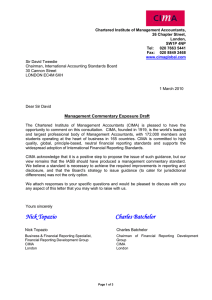Management Commentary_Final - IFRS.doc
advertisement
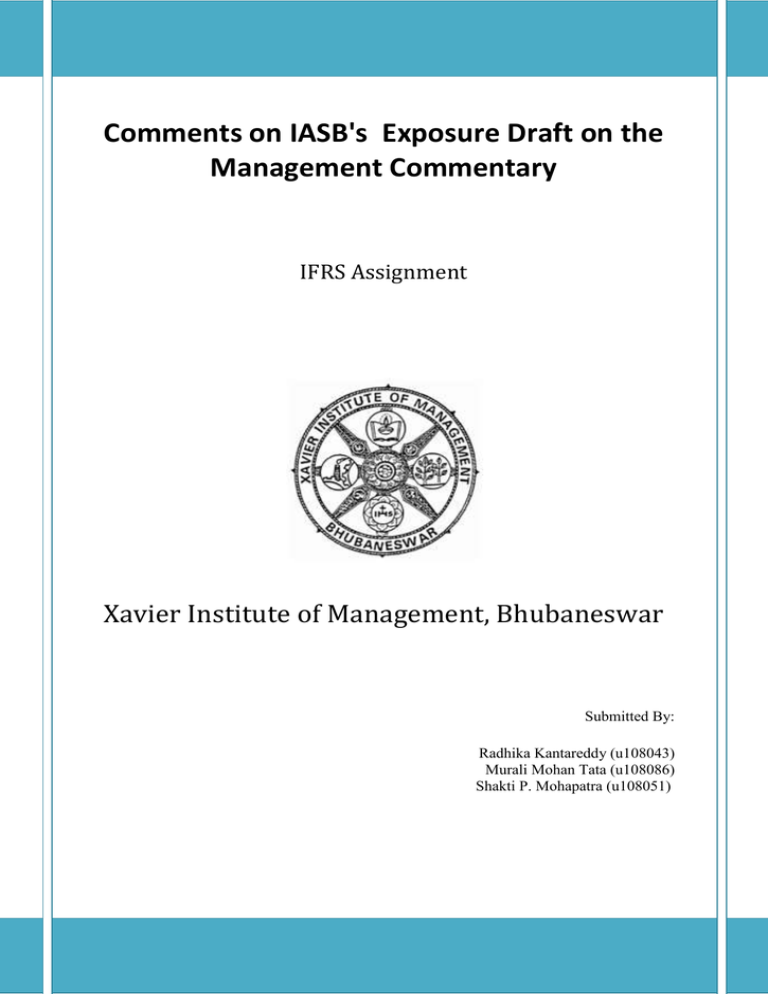
Comments on IASB's Exposure Draft on the Management Commentary IFRS Assignment Xavier Institute of Management, Bhubaneswar Submitted By: Radhika Kantareddy (u108043) Murali Mohan Tata (u108086) Shakti P. Mohapatra (u108051) ANSWERS TO QUESTIONS RAISED IN THE MANAGEMENT COMMENTARY Question-1 Do you agree with the Board’s decision to develop a guidance document for the preparation and presentation of management commentary instead of an IFRS? If not, why? ANSWER We as a group believe that the Board’s decision to develop a guidance document for preparation and presentation of management commentary instead of an IFRS is the correct decision. This nonmandatory guidance augurs well instead of a document which would be binding. This will help in convergence of thoughts on a global level which in turn will help in the quality of reporting. At present, there are many practices followed around the world. To develop a detailed standard which would be consistent with all these existing standards is a difficult task. Hence this non-mandatory guidance is better. Question-2 Do you agree that the content elements described in paragraphs 24–39 are necessary for the preparation of a decision-useful management commentary? If not, how should those content elements be changed to provide decision-useful information to users of financial reports? ANSWER After going through all the paragraphs 24 to 39, we as a group made a gist of what all is given in the paragraphs. We note the gist hereunder:Paragraphs 24 to 39 Summary of the points Nature of business, resources and risks to be described clearly. Content elements should not be presented in isolation Description of bus helps users gain an understanding of the business and external environment. Competitive position, products, services,business processes and distribution methods, structure and economic model. Priorities for action and resources to be managed. Relationship between objectives, strategy, management actions and executive remuneration Clear description of most important resources – risk and relationships that affect the entity’s long term value and how these are managed. Set out critical financial and non financial resources available and how they are used. Analyse the adequacy of capital structure – liquidity, cash flows, surplus. Principal risks identification – strategy for mitigating risks, and effectiveness of strategies. Relationship with stake holders – their effect on performance and value of entity. Distribution of customers. Description of financial and non financial performance and the extent to which it is indicative of future value. (Depends on management assessment.) Performance, position - beginning of the period - end of the period, significant changes in financial indicators – understand extent to which past performance may be indicative of future performance Analysis of prospects helps users understand management’s strategies for long term. Management to explain assumptions, risks and likelihood of achieving targets. Declaration of performance measures – Quantitative Indicators accepted and used widely. Indicators relevance to be checked from time to time to incorporate changes in business scenario or strategy. Non-IFRS items to be explained clearly or reconciled From the above summations, it can be seen that the Board wishes to adopt an approach based on certain principles which it has laid down. Our group is of the view that such a strategy is the correct one to adopt. All these lay down clearly the requirements which are already present in some regulations adopted by some countries. As these requirements are based on certain principles, these would iron out any contradictions and variations which might creep up with the various guidelines followed across the globe. Question – 3 Do you agree with the Board’s decision not to include detailed application guidance and illustrative examples in the final management commentary guidance document? If not, what specific guidance would you include and why? ANSWER After deliberation within the group, we came out with views which led to having both pros and cons at the Board’s decision not to include detailed application guidance and illustrative examples in the final management commentary guidance document. We have enumerated the points discussed in the group and have given them in a table:Positives It gives a framework within with we can apply the scope of illustrations. It provides approach consistency to similar situations. Negatives They might not be exhaustive. They might not be a proper representative sample As stated in the document, they might be interpreted as a floor or a ceiling. This might restrict the scope The person who is developing this might not be having an exhaustive knowledge of all industries. Examples and their treatment might differ from industry to industry. This may also bring in bias and subjectivism of the person or body preparing them.
